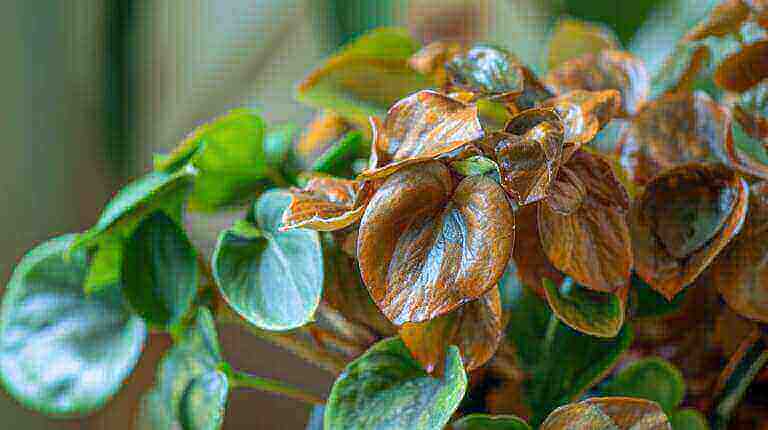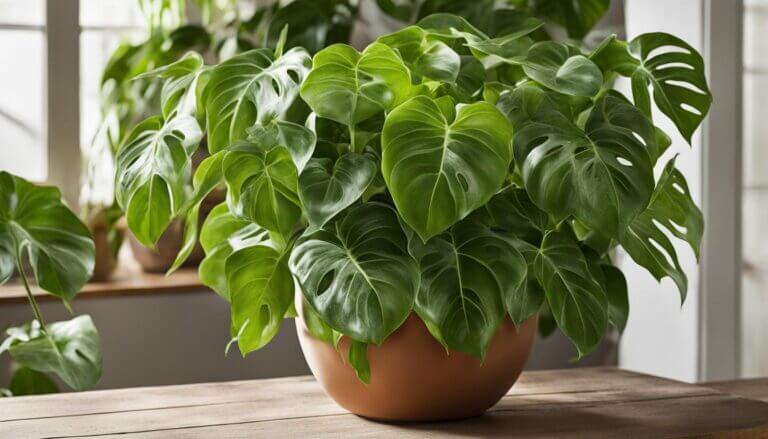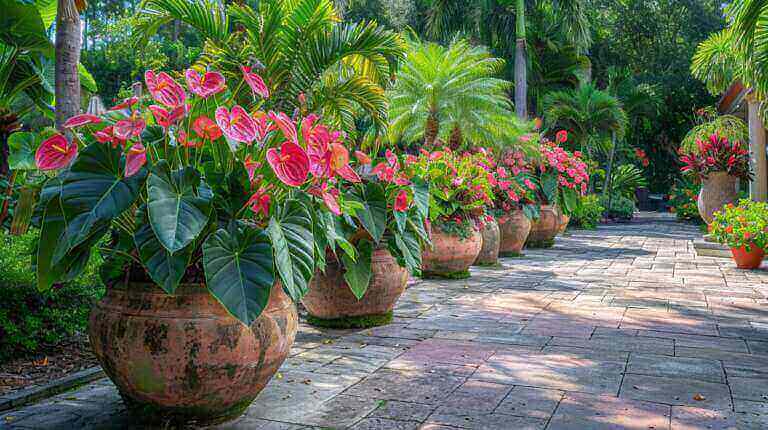Schefflera Umbrella Tree 101: Variegated Umbrella Plant Care Guide
Welcome to the comprehensive care guide for the Schefflera indoor plant, also known as the umbrella tree. In this article, I will provide you with essential information on caring for different varieties of Schefflera plants, including schefflera arboricola and schefflera actinophylla. Whether you are a seasoned plant enthusiast or a beginner, this guide will help you keep your indoor umbrella plants thriving.
Key Takeaways:
- Proper care is essential for the health and well-being of umbrella trees.
- Schefflera plants come in various varieties, including schefflera arboricola and schefflera actinophylla.
- Umbrella trees prefer bright indirect light and well-draining soil.
- Maintaining the right watering routine and humidity levels are crucial for their care.
- Take precautions to ensure the safety of pets and humans, as umbrella trees are mildly toxic.
Sunlight and Watering Tips for Umbrella Tree Houseplant
Proper sunlight and watering are essential for the care of your umbrella tree. Scheffleras, also known as umbrella trees, prefer bright, indirect sunlight. Larger varieties can tolerate some dappled direct sunlight, but it’s best to place them near an east, west, or diffused south window for optimal growth. Keep in mind that exposure to cold drafts or temperatures below 50°F should be avoided.
When it comes to watering, it’s important to find the right balance indoors. Scheffleras prefer even moisture, so water your plant once the soil has dried out completely. However, don’t wait too long as they don’t tolerate drought. To ensure thorough watering, water the plant until the entire root ball is soaked, and make sure the soil is well-drained to prevent root rot. Overwatering can lead to root rot, so be cautious not to water excessively.
Monitoring soil moisture is crucial for umbrella tree care. Checking the moisture level regularly by inserting your finger into the soil can help you determine when it’s time to water. If the soil feels dry a few inches below the surface, it’s time to water. Remember, consistent watering and well-drained soil are key to maintaining a healthy umbrella tree.
| Sunlight | Watering |
|---|---|
| Prefer bright, indirect sunlight | Water when soil has dried out completely |
| Some varieties can tolerate dappled direct sunlight | Water thoroughly to ensure entire root ball is watered |
| Avoid exposure to cold drafts or temperatures below 50°F | Ensure soil is well-drained to prevent root rot |
Creating a Humid Environment for Indoor Umbrella Plant
Scheffleras are tropical plants that thrive in high humidity environments. These plants prefer indoor humidity levels between 30-40% or higher. Although they can tolerate normal room humidity levels between 20-30%, higher humidity levels are more beneficial for their growth and overall health. If your home has low humidity, there are a few simple ways to increase humidity around your umbrella tree.
One effective method is to place a humidifier nearby. A humidifier releases moisture into the air, creating a more humid environment around the plant. This can help mimic the tropical conditions that umbrella trees naturally thrive in. Be sure to follow the manufacturer’s instructions for your specific humidifier and adjust the settings to achieve the desired humidity level.
Another option is to use a humidity tray. This method involves placing your umbrella tree on a tray filled with water and pebbles. As the water evaporates, it increases the humidity immediately surrounding the plant. Remember to regularly check the tray and refill it with water as needed to maintain the desired humidity level. Additionally, avoid letting the water touch the bottom of the pot, as this can lead to overwatering and root rot.
| Method | Benefits |
|---|---|
| Humidifier | – Provides consistent and adjustable humidity – Suitable for larger spaces or multiple plants |
| Humidity Tray | – Affordable and easy to set up – Improves humidity immediately around the plant |
By creating a humid environment for your umbrella tree, you can promote healthy growth and prevent issues such as dryness or leaf browning. Remember to monitor the humidity levels regularly and make adjustments as needed to ensure optimal conditions for your Schefflera plant.
Temperature and Soil Requirements for Umbrella Trees
When it comes to caring for umbrella trees, understanding their temperature and soil requirements is essential. These factors play a crucial role in the overall health and growth of the plant. Let’s delve into the optimal temperature range for umbrella trees and the type of soil they thrive in.
Temperature
Umbrella trees prefer temperatures between 60-75°F, creating a comfortable environment for their growth. While they can tolerate slightly cooler temperatures, it’s important to avoid exposing them to cold drafts or temperatures below 50°F. Sudden temperature drops can significantly damage the leaves and overall health of the plant. Therefore, it’s best to keep your umbrella tree in a location where temperature fluctuations are minimized.
Soil
The type of soil you use for your umbrella tree is crucial to its well-being. These plants prefer well-draining soil that allows excess water to flow out easily. This ensures that the roots are not sitting in water, which can lead to root rot. A good soil mix for umbrella trees consists of organic matter such as compost, coco coir, and perlite. This combination provides the necessary nutrients and promotes healthy root development. It’s important to ensure that the soil is not compacted and has good drainage to prevent waterlogging.
Creating the right environment for your umbrella tree by maintaining the optimal temperature range and using well-draining soil will greatly contribute to its overall health and growth. By providing the necessary conditions for your plant to thrive, you can enjoy the beauty and benefits of this tropical plant for years to come.
Common Problems and Precautions for Umbrella Trees
When caring for umbrella trees, it’s important to be aware of common problems that may arise. One issue you might encounter is leggy growth, which can indicate that your plant is not receiving enough sunlight. To address this, make sure to place your umbrella tree in a location with adequate bright, indirect light. You may also want to rotate the plant periodically to ensure even growth.
Yellow leaves can also be a cause for concern. If you notice your umbrella tree’s leaves turning yellow and the soil is consistently wet, it may be a sign of overwatering. To remedy this, adjust your watering practices by allowing the soil to dry out before the next watering. Remember, it’s important to maintain even moisture without letting the soil become waterlogged.
Brown leaf tips are another issue that umbrella trees may face. This can be caused by a lack of humidity or too much direct sunlight. To prevent this problem, monitor the humidity levels around your plant and ensure they’re within the recommended range. You can also consider using a humidity tray or placing a small humidifier nearby to create a more humid environment for your umbrella tree.
Lastly, it’s important to note that umbrella trees are mildly toxic to pets and humans if ingested. To ensure the safety of your loved ones, keep your plant out of their reach. If you suspect that your pet or child has ingested any part of the umbrella tree, it’s best to seek immediate medical attention. Common symptoms of ingestion include gastrointestinal upset.
FAQ
How much sunlight does the Schefflera plant need?
The umbrella tree prefers bright indirect sunlight. Larger varieties can tolerate some dappled direct sunlight, while smaller varieties do best in bright indirect light.
How often should I water my umbrella tree?
Water your Schefflera once the soil has completely dried out. It’s important to find the right balance and not wait too long in between waterings to avoid underwatering or overwatering.
How can I increase humidity around my umbrella tree?
If your home has low humidity, you can increase humidity around your umbrella tree by placing a humidifier nearby or using a humidity tray filled with water and pebbles to create a more humid microclimate.
What temperature is ideal for umbrella trees?
Scheffleras prefer temperatures between 60-75°F. They can tolerate slightly cooler temperatures, but should not be exposed to cold drafts or temperatures below 50°F.
What type of soil is best for umbrella trees?
Umbrella trees prefer well-draining soil that is rich in organic matter. A soil mix that contains coco coir, perlite, and compost is ideal for their growth.
What are some common problems that umbrella trees can experience?
Common problems include leggy growth (indicating insufficient sunlight), yellow leaves with wet soil (indicating overwatering), and brown leaf tips (caused by low humidity or too much direct sunlight). It’s important to address these issues promptly to ensure the health of your plant.
Are umbrella trees toxic?
Yes, umbrella trees are mildly toxic to pets and humans if ingested. It’s important to keep them out of reach to prevent any potential harm. Symptoms of ingestion can include gastrointestinal upset.







